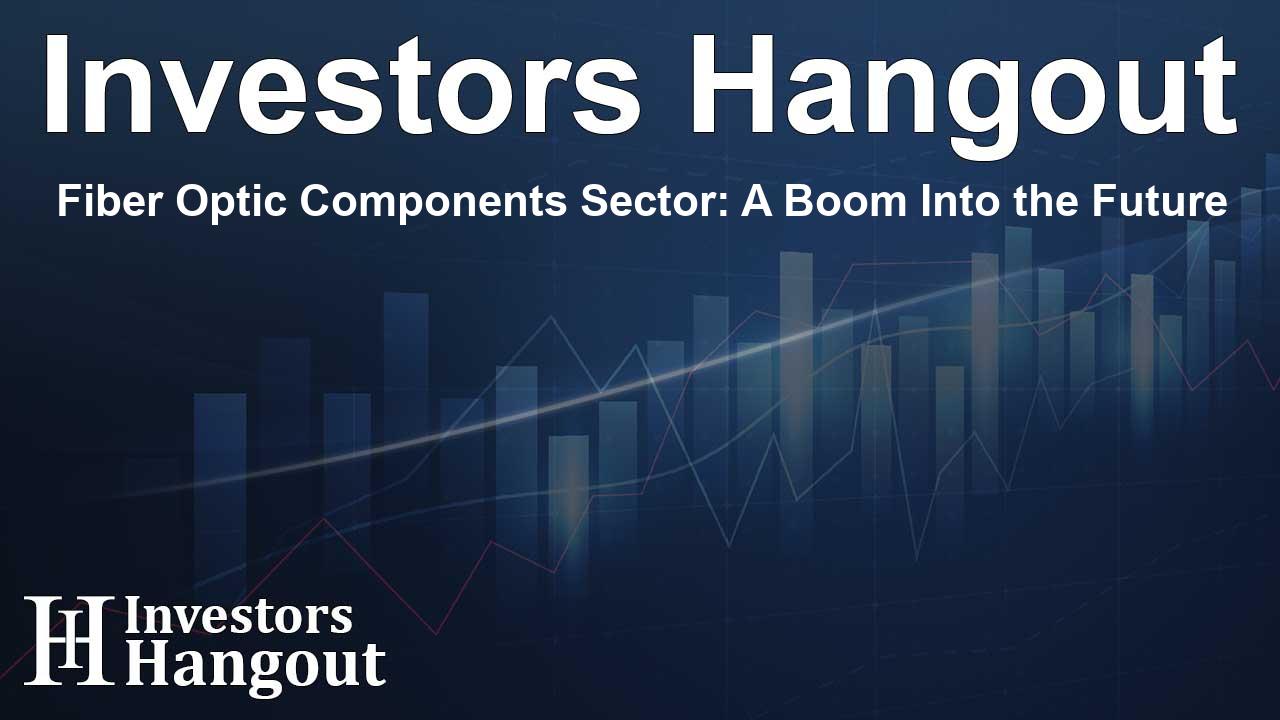Fiber Optic Components Sector: A Boom Into the Future

Growth of the Fiber Optic Components Market
The global fiber optic components market is anticipated to experience significant growth in the coming years, reaching a staggering USD 58.65 billion by 2030. This growth represents a remarkable compound annual growth rate (CAGR) of 9.8%, underscoring the increasing reliance on high-speed internet and data-driven applications. As more individuals and businesses require enhanced connectivity, the demand for fiber optic technology is surging.
Driving Forces Behind Market Growth
The Rise of Internet Users
The number of internet users continues to expand at an unprecedented rate. With more people accessing information online, particularly through high-bandwidth applications like video streaming and cloud services, the need for robust fiber optic networks has become paramount. These networks support the infrastructure necessary to accommodate increasing data traffic, enabling users to experience seamless connectivity.
Major Players and Their Influence
Notably, several prominent firms, including tech giants such as Google, Amazon, and Microsoft, significantly influence the fiber optic components market. These companies have emerged as dominant players, accounting for a substantial portion of international bandwidth usage. Their focus on improving data link speeds between major data centers drives demand for innovative fiber optic solutions, contributing to the overall market growth.
Market Segmentation and Trends
Leading Components and Their Applications
Transceivers have consistently held the largest market share, owing to the growing need for high-capacity data transmissions. The rise of artificial intelligence (AI), 5G, and other advanced technologies necessitates even greater bandwidth, thereby increasing the demand for 100G, 200G, and 400G transceivers. This surge is further exacerbated by the proliferation of data centers supporting various applications—from streaming services to cloud computing, each demanding higher performance levels.
Distributed Sensing Technologies
Within this dynamic market, the distributed sensing segment is set to experience the fastest growth. Distributed fiber optic sensors collect real-time data on parameters like temperature, pressure, and strain along the length of the cable, proving essential across various industries such as safety, oil and gas, and civil engineering. These sensors are not only reliable in harsh environmental conditions but also immune to electromagnetic interference, making them invaluable for monitoring physical conditions over extensive distances.
Regional Insights and Market Dynamics
North America's Dominance
North America is poised to maintain its position as the leading region in fiber optic component sales. The presence of several manufacturers and a thriving tech ecosystem contribute to this dominance. Companies like Coherent Corporation and Lumentum are actively innovating and addressing the growing need for advanced fiber optic modules. The strategic focus on high-performance applications in telecommunications and data centers propels the market forward in this region.
Future Opportunities and Challenges
As the fiber optic industry grows, so do the associated opportunities and challenges. While there is a robust potential for market expansion, security threats to optical networks present a significant concern. As technology advances, ensuring the safety and integrity of data transmission becomes crucial. Companies must focus on developing robust security protocols to protect these vital infrastructures exposed to various cyber threats.
Conclusion: A Bright Future Ahead
The fiber optic components market stands on the brink of substantial transformation, driven by technological advancements and the increasing demand for seamless connectivity. With key companies pushing the boundaries of innovation, there lies an opportunity for growth that will likely reshape how industries operate in the digital landscape.
Frequently Asked Questions
What is the expected market value for fiber optic components by 2030?
The market is projected to reach USD 58.65 billion by 2030.
What are the primary applications of fiber optic components?
They are predominantly used in telecommunications, data centers, and high-bandwidth services such as streaming and cloud applications.
Which region currently holds the largest share of the fiber optic market?
North America is expected to retain its position as the largest market for fiber optic components due to significant industry presence and innovation.
What role do major tech companies play in the fiber optic components market?
Major tech companies drive the demand for fiber optic solutions as they account for a large share of bandwidth usage and constantly require improved connectivity.
What challenges does the fiber optic industry face?
The industry faces challenges primarily related to security threats to optical networks, which necessitate the development of robust protective measures.
About The Author
Contact Hannah Lewis privately here. Or send an email with ATTN: Hannah Lewis as the subject to contact@investorshangout.com.
About Investors Hangout
Investors Hangout is a leading online stock forum for financial discussion and learning, offering a wide range of free tools and resources. It draws in traders of all levels, who exchange market knowledge, investigate trading tactics, and keep an eye on industry developments in real time. Featuring financial articles, stock message boards, quotes, charts, company profiles, and live news updates. Through cooperative learning and a wealth of informational resources, it helps users from novices creating their first portfolios to experts honing their techniques. Join Investors Hangout today: https://investorshangout.com/
The content of this article is based on factual, publicly available information and does not represent legal, financial, or investment advice. Investors Hangout does not offer financial advice, and the author is not a licensed financial advisor. Consult a qualified advisor before making any financial or investment decisions based on this article. This article should not be considered advice to purchase, sell, or hold any securities or other investments. If any of the material provided here is inaccurate, please contact us for corrections.
